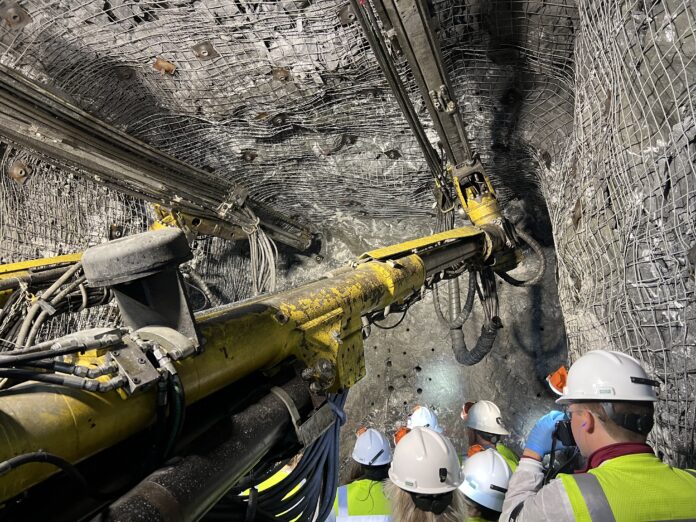The U.S. Department of the Interior’s release of the final 2025 Critical Minerals List on November 7th, has expanded to 60 essential resources, adding 10 new entries—boron, copper, lead, metallurgical coal, phosphate, potash, rhenium, silicon, silver, and uranium—amid escalating concerns over supply chain vulnerabilities. This update, based on U.S. Geological Survey (USGS) modeling of over 1,200 trade disruption scenarios, underscores America’s heavy reliance on imports: fully foreign-dependent for 12 minerals and over 50% for 29 others, with China dominating production of 30.
EPA Administrator Lee Zeldin has previously emphasized the state’s role in energy dominance stating, “Alaska is rich in critical minerals including graphite, lithium, tin, tungsten, rare earth elements and platinum-group elements—essential to everyday products Americans demand.
The move signals a strategic pivot to fortify domestic production, backed by nearly $1 billion in proposed federal funding for mining, processing, and manufacturing innovations. The administration is also fast-tracking permits for 10 key projects targeting copper, antimony, and lithium, while forging Indo-Pacific alliances to diversify global sourcing and counter non-allied risks.
Alaska emerges as a key player in this national effort, boasting vast reserves of 49 out of 50 critical minerals, including rare earth elements, graphite, lithium, tin, tungsten, platinum-group elements, cobalt, nickel, and the newly listed copper and zinc. The state’s mineral industry generated $4.51 billion in 2022 production alone, with USGS assessments highlighting high-potential deposits in placer tailings and alkaline igneous rocks. At the Greens Creek mine, recoverable metals in tailings are valued at $2.8 billion, primarily gold and silver but rich in critical byproducts. Globally, Alaska holds 12% of copper resources, 7% of zinc and silver, and 16% of molybdenum, positioning it to slash U.S. import dependence.
Industry leaders hail the list as a catalyst for exploration. As demand surges for renewables and defense tech, Alaska’s resources could redefine multiple sectors of the US economy—provided permitting and infrastructure keep pace.

Make hay while the sun shines. If/when Democrats come back in power we’ll be shut down again in the name of climate change.
Jim,NIMBY doesn’t see red or blue in my experience.NIMBY is just NIMBY.
As exhibit A,I enter into the record:
Point Mackenzie prison
MEA power plant
Bill Walkers Nat Gas pipeline plan
Bill Walker was working with China for that pipeline plan and costing us $50,000+ per month just for his lawyer. He was gaslighting us, not building a pipeline.
Manda,thanks for making my point.PT Barnum in Chief has just touted China as a potential investor/buyer of NS LNG.How much has the current iteration of this project cost us/month?For what the past 4 yrs or so?Goodluck trying to find that information.
The electorate held there noses the first time around because of china, and perhaps rightly so.But now this time is better?
What people don’t understand, in the meantime, Kittamat is up and running with expansion projects on the board.First mover advantages.
Guess where OUR natgas is going to come from ?
We couldn’t get the prison built closer to core in an abandoned gravel pit, because light pollution and potential prison breaks might lower prop value..Cost?:$250+million
We couldn’t get MEA power plant for some of the same reasons,ANC muni said thank you very much!
Thats the power of NIMBY!
Same thing with the MEA
Nova Minerals is building a haul road 150 miles North west of Anchorage to transport Antimony from the Estell Project to Point McKenzie. A proposed Antimony Refinery is to be built there also. Nova Minerals stock ticker is NVA.
Nova minerals is not building a haul road. The state is building the road for a foreign owned mine. There are two roads on the books. D.O.T has a road planned to start in Big Lake and AIDA plan is the West Su access that starts at Point Mac. The whole project is being promoted by lies. Try calling AIDA or D.O.T and asking some basic questions. AIDA will usually ignore you or tell you to call D.O.T and D.O.T won’t answer your questions. The proposed road goes across or right along privately owned property. When I asked Shelly Huges she replied “there’s plenty of remote property you can by.” So someone that bought a remote parcel and put blood,sweat, and tears into a parcel isn’t considered in the equation. I have lived in the bush for 10 years now and I understand what it cost and takes to get materials to a remote property. I also spent 2 years hauling freight on the winter road to the Estelle project. The truth is the private property owners in the area do not want this road.
Amen to a true account of legitimate issues. Anything coming out of the Crime Boss Dunleavy office belongs in a septic tank.
Thumbs up!
Alaska needs to be expedient or at least conscientious of Alaska’s resources which belong to Alaskans, in particular foreign owned mining companies that receive all the profits except the measly 3% the state receives. We need more money in the PFD program.
Liberal exploitation of Alaska’s minerals to foreigners is not good., plus we need another new business man like governor at the helm, Dunleavy was a poor business man for the state as he found out with foreign owned defunct pebble.
Let’s get Northern Dynasty going again!!! NAK
This is awesome news! I read about Alaska’s wealth of critical minerals during Trump’s 1st term and am glad to hear about them in the news again. Spread the word far and wide -we don’t need to rely so heavily upon foreign countries to manufacture many goods.
Mines.
The Natural Gas pipeline.
This pablum has been going on for 20+ years. (We did Pogo somehow?).
We don’t have the decisive leadership to make these projects happen.
Hell, we vote Republicans in to be the majority and they caucus with the Democrats.
Disconcerting, to say the least…